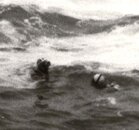What? If you breath out it goes somewhere in a counterlung and then into a scrubber. If the mushroom valves were both installed in same direction the air was going through the scrubber.
What you are suggesting is that one or both mushroom valves were not installed at all. Do you have that knowledge?
I dive a rebreather and understand the gas flow of a standard rebreather. Breathing in and out of a balloon suggests that either the mushroom valves were not installed, or the scrubber wasn't installed... Otherwise the scrubber is in play. If both mashroom valves are oriented in opposite directions you either can't breath in or you cant breathe out.
If an o ring was omitted fine then yes the scrubber may be bypassed but if the direction of flow is switched there is no reason why the scrubber wouldn't work...
Garth
Sent from my iPhone using Tapatalk
---------- Post added December 3rd, 2014 at 07:48 PM ----------
Did you not read my BOv comment. Are you denying that people have actually bailout out and survived a CO2 hit?
It's possible although not ideal to have a CO2 hit at all obviously.
A lot of these comments seem like they are coming from people who don't dive rebreathers... Just sayin.
Garth
Sent from my iPhone using Tapatalk
---------- Post added December 3rd, 2014 at 07:53 PM ----------
You have a lot of Rebreathers listed in your profile but do you actually dive Rebreathers frequently or are you teaching often?
I'm not convinced this was a primary CO2 hit as opposed to a flooded rebreather event with building CO2.
Everyone has an opinion. No one has to like mine...

Breathing in a balloon... Not good for your health...
Sent from my iPhone using Tapatalk




